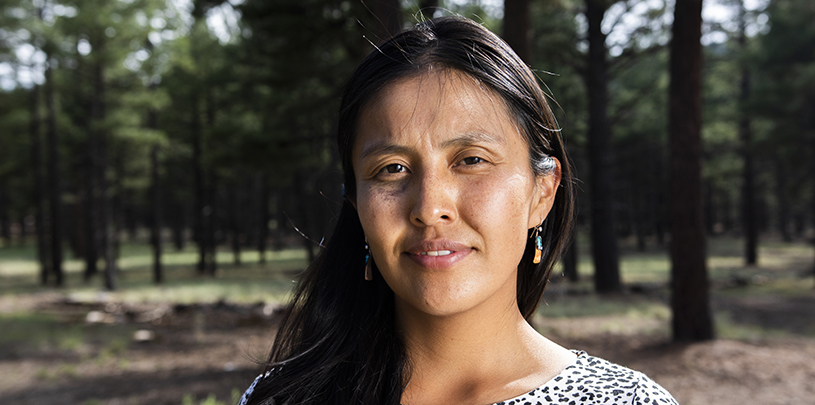 by Gayatri Girirajan, Grand Canyon Community Organizing Fellow
by Gayatri Girirajan, Grand Canyon Community Organizing Fellow
This February, signs proclaiming “Grand Canyon National Park Centennial: 1919-2019” appeared alongside highways leading into the park and accompanied a calendar of events commemorating the 100th anniversary of our crown jewel national park.
One hundred years of federal protections for Arizona’s most distinctive landscape certainly seems noteworthy. But for the tribes who hold the canyon sacred, the centennial is not a celebration. The canyon’s designation as a national park brought displacement, barriers to access, and a write-over of history for its Indigenous people.
The Intertribal Centennial Conversations group is working to change the narrative and bring Native voices into the second century of Grand Canyon National Park. Colleen Cooley, a Navajo facilitator of the group, offers her vision for the canyon in the centennial year and beyond.
What do the Intertribal Centennial Conversations mean to you?
I got involved early on because I thought it was important and needed. We still have to fight for our voices as Indigenous peoples in a lot of spaces.
I understand that Grand Canyon National Park is doing what they can to improve some of the relationships between the Indigenous people that work there, that live there, that go hiking there, but for me personally, I think it’s important that our voices and perspectives be heard.
What do you want people attending the park this year to know about the centennial?
Yes, the park is celebrating 100 years, but there’s a longer history, and the tribes want that recognized and acknowledged. The tribes are also in collaboration with the park on changes to come and don’t want to dwell on the past.
I’m starting to see a movement around it, the acknowledgement of land and where you’re at. I can think of the John Muir Trail and the Paiute people that were there before John Muir, or the [San Francisco] peaks and the history with the different names of the peaks before they were named by non-Native people.
Do you see the centennial sparking these conversations?
I think more conversations are taking place this year because there’s a national recognition. There are signs on the roadways, and I even heard this morning, on the radio station, them talking about the Grand Canyon centennial and the celebration and moving forward with the next 100 years. I think it’s sparking more people’s interest in what the centennial is, and the intertribal side is doing what we can to have our perspectives recognized as well.
How would you like to see awareness and conversations moving forward into the next 100 years?
I think it has to come from both the park side and the tribes’ side. That’s the reason why the [Intertribal Centennial Conversations] group came together, to think of ideas to improve something as little as—well, maybe it’s not little—as changing the signs on the rim to tell the true history coming from the tribes. And I know that can be a long process.
Working as a river guide on the San Juan River, I can see that the guests that go down the river are really interested in our perspective and history and what we have to share, and I think that’s still needed—whether it’s more indigenous river guides, or hiking guides, or just interpretive staff in the park. There needs to be more of that coming from us, and our stories, and our perspectives. I think there’s not an awareness that people used to live there and still live there and have a huge connection to that place.
What do you think is the most exciting centennial event?
The one coming up, the Rumble on the Rim!
For the tribes, it’s not really seen as a celebration, more of a recognition and chance for decent discussion about what happened in the past, but also to move forward collectively. And I think the Rumble on the Rim will showcase some of that sharing. That sounds really exciting and much needed for the visitors, for the staff, for the tribes.
I think it has to go beyond events too. When the tribes looked at it, they didn’t see it as the “next hundred years” and it wasn’t a hundred years prior. It’s more than that. We have a much longer history with the canyon before the park existed. And that’s where we hope the conversations go.
And it’s going to take a long time, like I said. It’s not just going to be this year, bringing awareness. It has to continue for years to come.




